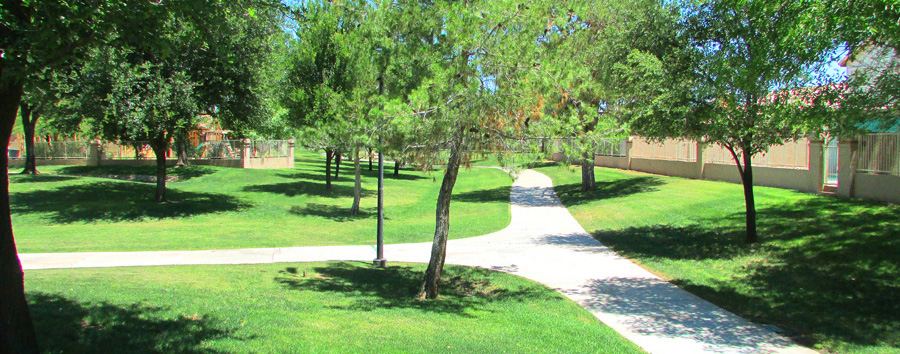What Increases Your Home’s Value? Apparently Walking, and Trader Joe’s
I recently read an article titled Trader Joe’s is Secretly Making Your Home More Valuable. I get it, sort of. But at the end of it all my question was: Is retail like Trader Joe’s actually increasing the value of the residential areas around it, or is it more likely that Trader Joe’s strategically places their stores in areas that tend toward higher property values?
One thing that truly does seem to be making a difference is walking trails. Nearly all of the newer neighborhoods I’ve encountered offer walking trails and in the absence of neighborhood footpaths, cities and towns are becoming aware of a high demand for safe and peaceful walkable spaces.
More and more often, well maintained walking trails are showing up on home buyer’s wish lists. Many people have tired of the monthly expense of belonging to a gym, or prefer fresh air and low impact activity. Not to mention that everyone from toddlers to senior citizens can realize significant health benefits from walking.
The list below of the 10 Most Walkable Cities doesn’t include Gilbert, Arizona. My guess from looking at the list, is that the survey is comprised of only large cities or major business hubs. But the cities of Gilbert, Chandler, Mesa and Sun Lakes, Arizona have a deluge of walking trails, bike routes, parks and recreational areas. For walkability, you can’t beat the Greater Phoenix area suburbs of the East Valley.
Walking: For Your Health and for Your Home’s Value
By Maria Patterson
 Requiring little athletic ability and virtually no cost, walking has become a popular fitness option for people of all ages. But for a growing number of Americans, walking is about much more than exercise—it’s a lifestyle choice.
Requiring little athletic ability and virtually no cost, walking has become a popular fitness option for people of all ages. But for a growing number of Americans, walking is about much more than exercise—it’s a lifestyle choice.
Developers and agents across the country can attest to the popularity of this real estate trend and the increase in walkable neighborhoods. A rise in urban living space nationwide is in direct response to consumer demand for the ability to walk to public transportation, restaurants, stores and more.
While according to the 2015 National Community and Transportation Preference Survey, conducted by the National Association of REALTORS® and the Transportation Research and Education Center at Portland State University, millennials prefer walking over driving by 12 percentage points, walkable neighborhoods are not just for the young—retiring baby boomers are also looking for a lifestyle that puts culture and entertainment within walking distance.
According to the report ‘Foot Traffic Ahead,’ conducted by the Center for Real Estate and Urban Analysis at George Washington University School of Business in conjunction with LOCUS: Responsible Real Estate Developers and Investors, walkable urban places are growing in all of the 20 largest metro areas in the U.S., gaining marketshare against suburban competitors for the first time in decades and garnering higher rent premiums, reports Curbed.
What makes a neighborhood walkable? According to Walk Score®, which helps people evaluate an area’s walkability when deciding where to live, walkable neighborhoods feature the following characteristics:
- A center of town, such as a main street our public space
- Enough people to allow local businesses to thrive and public transit to run frequently
- Mixed-income and mixed-use housing, including affordable housing near businesses
- Plenty of parks and public space
- A pedestrian-friendly design, i.e, buildings are close to the street while parking lots are located further back
- Schools and workplaces that are close enough for most residents to walk to from their homes
- Streets designed for bicyclists, pedestrians and transportation
And here they are—2016’s 10 most walkable cities, according to Walk Score:
- New York City
- San Francisco
- Boston
- Philadelphia
- Miami
- Chicago
- Washington, D.C.
- Seattle
- Oakland
- Long Beach
Lace up your sneakers and take a stroll in your neighborhood to get a sense of its walkability. There might be more within reach than you realized—and at the very least, your health will thank you.


